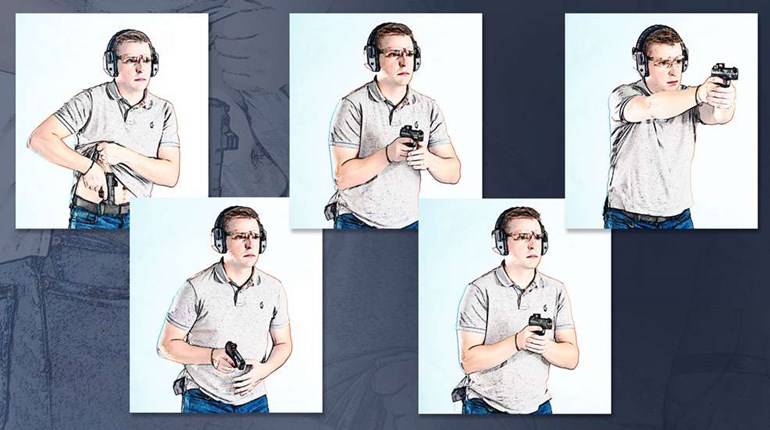
Lately, I’ve been enjoying re-reading the works of some of the handgun enthusiasts and experts from the first half of the 20th century. There was a lot of good information from the shooters of that era, but there were also some ideas and suggestions that, to be kind, have outlived their time. With the evolution of defensive handgunning, we have simply grown beyond some of those ideas and prejudices. In no particular order, here are a few things we have outgrown.
More than one of these old shooters were of the opinion that only revolvers made the best defensive tools. They pointed out that semi-automatics were prone to jamming, and found them to be exceedingly slow on the draw and shoot, due to having to disengage the thumb safety. In addition, they didn’t like semi-automatics because they were poorly balanced and just didn’t point right.
Of course, through the years, we have found all of these criticisms to be unfounded, and the guns themselves have evolved to eliminate some of what used to be valid concerns. We know that when a decent semi-auto pistol is kept clean and properly lubricated, malfunctions are rare. We’ve also learned the proper ways to clear malfunctions should they occur. In addition, disengaging the thumb safety—if there is one—becomes an integral part of the draw stroke and shouldn’t slow down the defensive-pistol presentation at all, when done correctly. The matter of balance and pointability is a very subjective thing, and there were also shooters of that same era who used semi-autos quite effectively in gunfights.
Another interesting phenomenon of that era was the number of handgunners who advocated cutting away the front of the trigger guard on their handguns. This was promoted by J.H. FitzGerald, working for Colt Firearms, and the resulting revolver is now called a Fitz Special. It was suggested that the practice came about so that one could run a handgun during the wintertime while wearing heavy gloves. But, the most popular idea seems to be that these gunners just thought it allowed them to get the gun into action faster.
COL Charles Askins, beginning with his Border Patrol service, had a number of guns so altered. Rex Applegate and William Fairbairn were two other well-known shootists who favored the Fitz Special. Moreover, Texas Ranger Captain M.T. “Lone Wolf” Gonzaullas had the modification done to his 1911s as well as his double-action revolvers.
And then along came Bill Jordan, Border Patrol exhibition shooter. (I suspect that the only biped who had hands bigger than Jordan’s would have been Sasquatch.) The giant did all of his fast and fancy exhibition work with Smith & Wesson revolvers that had the trigger guards intact, although he did slightly trim the right side of the trigger guard so it didn’t interfere with his trigger finger. Clearly, regular humans need not worry about it and get along just fine with trigger guards the way they come from the factory.
Recently, I sent an older model Colt Detective Special off to Tyler Gun Works to be turned into a contemporary Fitz Special. I want to be clear that the conversion was not done because I thought it necessary; my idea was simply to honor the memory of the shooters of this particular era. My thought is, although none of them would have admitted it, the Fitz conversion was just a gunfighter’s signature of the times.
And, of course, 1900 to 1950 was certainly the era of point-shooting. Some called it hip shooting, although the gun was not usually near the hip when put into action. Others called it instinctive shooting, although there is nothing instinctive about shooting. Essentially, they all pointed and fired the gun without using the sights, so I’ll just call it point-shooting.
Now, we know that point-shooting works. There are too many of us still around who can attest to it being an effective defensive skill to add to your toolbox. But, it is not a beginner’s technique; rather it is an advanced defensive technique. The important thing to know is it takes a lot of practice with a whole lot of ammo to perfect. And, for all of that, it has a very limited application, being only effective at close range.
Modern methods, especially the Modern Technique of the Pistol, have shown that using the pistol’s sights is only slightly slower and a whole lot more effective. Gunfights aren’t necessarily stopped by the first center hit, either.
I’m not trying to suggest that the gunmen of the 1900 to 1950 era were dummies—far from it. But, they were trying to learn their craft by trial and error. Today’s abundance of defensive-training schools provide us a vital shortcut, which is a luxury that the old-timers just didn’t have. It takes a smart person to take full advantage of opportunities like that.


































